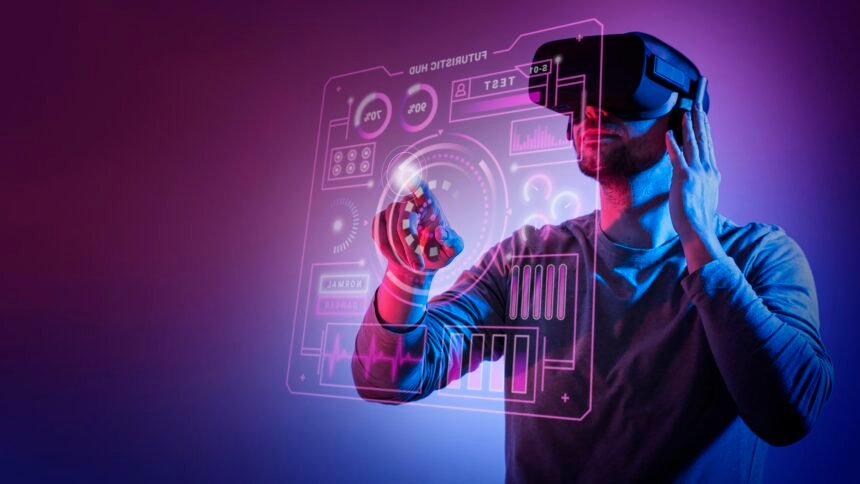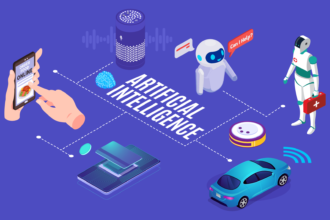In today’s fast-paced world, technological innovations are not just influencing our lives—they’re revolutionizing them. From artificial intelligence (AI) to quantum computing, we are witnessing a wave of innovations that are set to reshape the future in ways we can barely imagine. Let’s dive into some of these groundbreaking technological innovations and explore how they’re paving the way for a brighter tomorrow.
The Rise of Artificial Intelligence
Artificial Intelligence has become a buzzword in recent years, and for good reason. AI is no longer a futuristic concept; it’s a reality that’s transforming industries across the globe. From healthcare to finance, AI is improving efficiency, accuracy, and outcomes.
AI in Healthcare
Imagine a world where doctors can diagnose diseases with pinpoint accuracy, even before symptoms appear. AI is making this possible with predictive analytics and personalized medicine. For example, machine learning algorithms can analyze patient data to predict the onset of diseases like diabetes or cancer, allowing for early intervention and better treatment outcomes.
AI in Finance
In the financial sector, AI is enhancing fraud detection, automating trading, and providing personalized banking experiences. Robo-advisors are now managing investment portfolios with algorithms that outperform human advisors, offering clients better returns at lower costs.
Quantum Computing: The Next Frontier
Quantum computing is poised for technological innovations with its unprecedented processing power. Unlike classical computers, which use bits to process information, quantum computers use quantum bits or qubits, enabling them to solve complex problems exponentially faster.
Applications of Quantum Computing
From cryptography to materials science, quantum computing holds the potential to solve problems that are currently unsolvable. In cryptography, for example, quantum computers could break current encryption methods, leading to the development of new, more secure encryption technological innovations. In materials science, they could simulate atomic interactions to design new materials with extraordinary properties.
The Internet of Things (IoT): A Connected World
The Internet of Things is connecting devices, systems, and services, creating a network of interconnected gadgets that communicate and share data. This connectivity is enhancing our daily lives, making our homes smarter and our cities more efficient.
Smart Homes
Smart homes equipped with IoT devices can automate everything from lighting to security. Imagine your home adjusting the thermostat before you arrive, ensuring optimal comfort, or your refrigerator notifying you when you’re low on groceries. These innovations are not just convenient; they also promote energy efficiency and cost savings.
Smart Cities
IoT is also transforming urban living through the development of smart cities. These cities use data collected from various sensors to manage resources more efficiently, reduce traffic congestion, and improve public services. For instance, smart traffic lights can adapt to traffic conditions in real-time, reducing wait times and emissions.
Renewable Energy: Powering the Future
With the global push towards sustainability, renewable energy technologies are gaining momentum. Solar, wind, and hydroelectric power are becoming more efficient and affordable, offering clean alternatives to fossil fuels.
Solar Power
Advancements in solar technology are making it possible to harness more energy from the sun than ever before. Innovations such as perovskite solar cells promise higher efficiency and lower production costs, making solar power a viable option for more people and businesses.
Wind Energy
Wind turbines are also evolving, with designs that maximize energy capture and reduce environmental impact. Offshore wind farms, in particular, are tapping into stronger and more consistent winds at sea, providing a reliable source of renewable energy.
Biotechnology: Redefining Health and Agriculture
Biotechnology is another field that’s making significant strides, with applications in healthcare, agriculture, and environmental management.
CRISPR and Gene Editing
CRISPR technology is revolutionizing genetics by allowing precise edits to DNA. This has enormous potential for treating genetic disorders, developing disease-resistant crops, and even eradicating pests that threaten food security.
Sustainable Agriculture
Biotech innovations are also promoting sustainable agriculture. Genetically modified organisms (GMOs) and biopesticides are improving crop yields and reducing the need for chemical fertilizers and pesticides, leading to more sustainable farming practices.
Autonomous Vehicles: The Future of Transportation
Autonomous vehicles are set to transform the way we travel, promising increased safety, efficiency, and accessibility.
Self-Driving Cars
Self-driving cars use a combination of AI, sensors, and real-time data to navigate roads and traffic. These vehicles have the potential to reduce accidents caused by human error, lower transportation costs, and provide mobility to those unable to drive.
Drones and Delivery
Drones are also becoming a key component of autonomous transportation, particularly in delivery services. Companies like Amazon and UPS are experimenting with drone delivery to provide faster and more efficient service, especially in remote areas.
3D Printing: Revolutionizing Manufacturing
3D printing is changing the manufacturing landscape by allowing for the creation of complex designs and custom products on-demand.
Custom Manufacturing
This technology is particularly valuable in industries like aerospace and healthcare, where custom parts and prosthetics can be produced quickly and cost-effectively. For example, 3D-printed organs and tissues are being developed for medical use, potentially saving lives and reducing the need for organ donations.
Sustainable Production
3D printing also supports sustainable manufacturing by minimizing waste and reducing the need for large inventories. Products can be made as needed, cutting down on excess production and storage costs.
Conclusion
The future is being shaped by these pioneering technological innovations. As we continue to push the boundaries of what’s possible, we are creating a world that is more connected, efficient, and sustainable. Embracing these advancements will not only improve our quality of life but also ensure a better future for generations to come.











